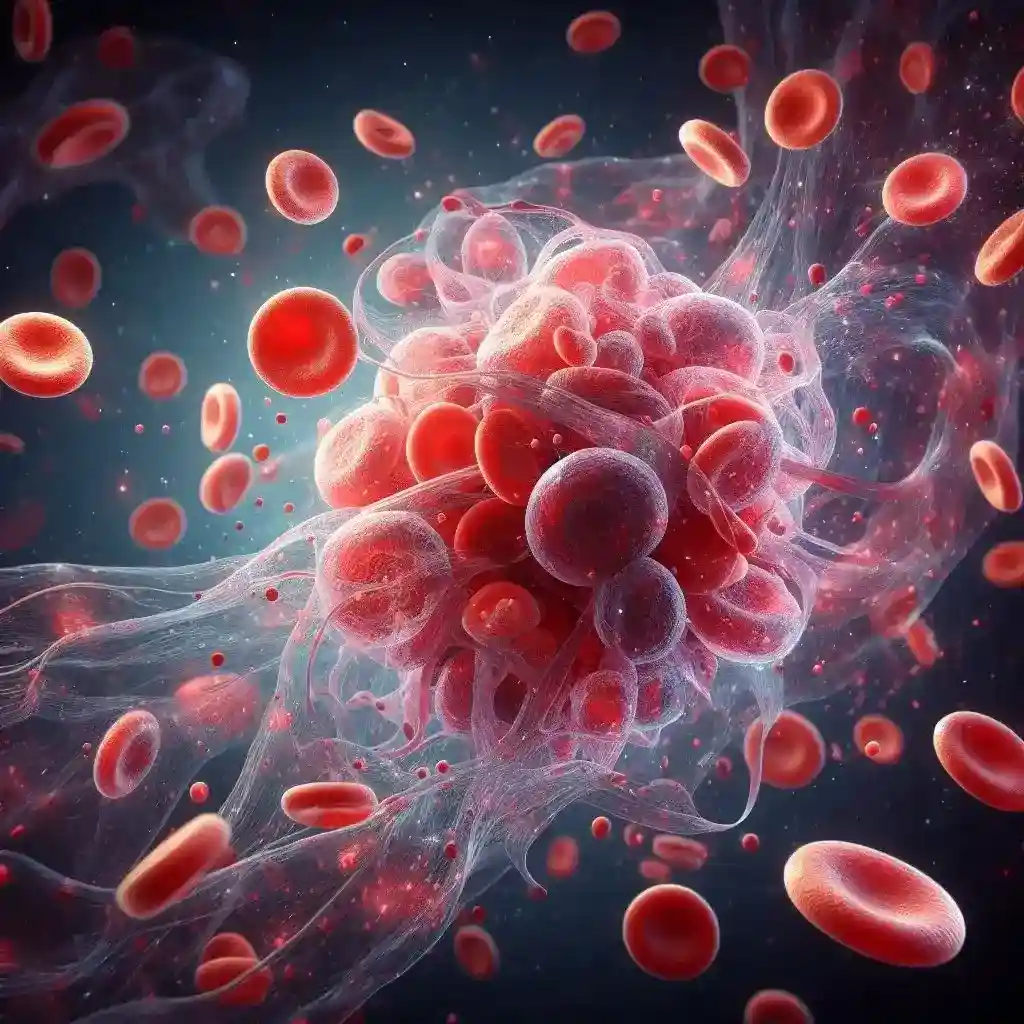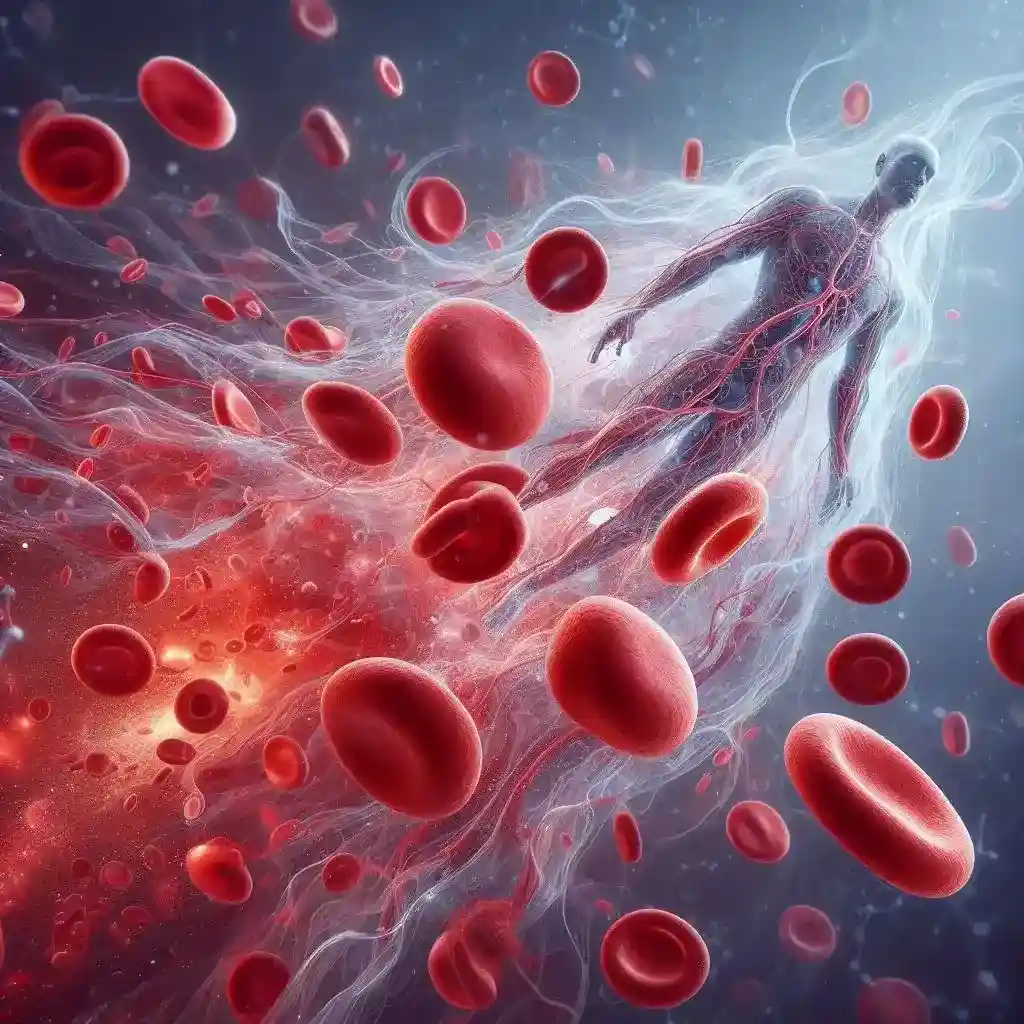Introduction:

Welcome to the Microcosm: An Overview of Newborn RBC Count
“Get Relief Now 5 Guide to What Can Cause Newborn Constipation”
In the mesmerizing microcosm of infant physiology, the orchestra of life commences with a symphony led by the diminutive yet potent Newborn RBC Count. These minuscule cellular entities, pulsating with vitality, play a pivotal role in the nascent life’s circulatory ballet. As we embark on this exploration, we unravel the delicate choreography of red blood cells (RBCs) in their earliest chapters.
In the ethereal realm of the neonate, understanding the dynamics of Newborn RBC Count is akin to deciphering the blueprint of vitality itself. These microscopic troopers’ unique numerical configuration lays the foundation for the thriving ecosystem within the infant’s circulatory cosmos.
As we delve deeper into this microcosmic marvel, we navigate the intricacies of RBC formation, witnessing the awe-inspiring journey from primitive precursors to fully-fledged blood warriors. This metamorphosis, shrouded in the language of hematopoiesis, unveils the magic of life’s genesis.
Quantifying existence takes a nuanced turn when we confront the numerical nuances of Newborn RBC Count. Distinct from the mature circulatory landscape, the infant’s red cell battalion is calibrated for a different dance, a choreography dictated by the unique demands of burgeoning life.
Yet, in this symphony of life, maternal influence holds sway. The mother’s health, a paramount conductor orchestrating the unborn’s vital overture, shapes the composition of the tiny but resilient blood populace. The maternal symphony harmonizes with the innate rhythm of fetal development, composing a prenatal opus of health and vitality.
In comprehending the multifaceted functions of these microcosmic warriors, we uncover a narrative beyond mere oxygen transport. These Newborn RBCs emerge as versatile sentinels, contributing to the infant’s immune defense—a testament to the intricate web of life woven at the cellular level.
Every newborn’s journey is imprinted with a unique numerical fingerprint, a manifestation of genetic inheritance and external influences. This numerical narrative, the quantitative expression of life’s blueprint, highlights the intricacies of genetic destiny and the impact of the environment on cellular composition.
However, in this microcosmic saga, challenges may arise. Anaemia, a shadow on the canvas of vitality, can dim the brilliance of early life. Recognizing the signs, understanding the causes, and navigating solutions become essential in safeguarding the vibrant narrative of the newborn’s circulatory saga.
Diagnostic tools become our looking glass. Blood tests, meticulously designed to assess Newborn RBC Count, unveil insights into the health narrative of these tiniest blood citizens. Understanding these diagnostic techniques empowers caregivers with the foresight to guide and nurture optimal infant development.
In the nurturing embrace of parental care, the journey continues. Nutrition emerges as a cornerstone, shaping the landscape of Newborn RBC Count. From the maternal dietary overture during pregnancy to the sustenance provided through breastfeeding, each nourishing note contributes to the crescendo of a healthy cellular symphony.
The Importance of Understanding Infant Blood Composition
In the intricate choreography of a newborn’s biology, comprehending the nuances of infant blood composition is paramount. The cellular ballet within their veins, specifically the Newborn RBC Count, orchestrates the symphony of life. Delving into this microcosmic world is not just a scientific pursuit; it’s a key to unlocking the vitality and health of these nascent beings.
Understanding the unique makeup of infant blood provides a roadmap to their well-being. The significance of a balanced Newborn RBC Count goes beyond numerical metrics; it speaks to the very essence of optimal development and resilience in the face of life’s early challenges.

The First Beat: Newborn Cardiovascular System:
In the grand overture of life, the heart takes centre stage, orchestrating the symphony of a newborn’s cardiovascular system. Understanding this inaugural rhythm unveils the marvel of the tiny ticker and the pivotal role of red blood cells in shaping early cardiovascular health.
Unveiling the Tiny Ticker: How a Baby’s Heart Develops
At the genesis of existence, the heart’s journey begins with a minuscule pulse, gradually evolving into the complex organ that propels life. Initially a mere tube, the neonatal heart metamorphoses into a four-chambered masterpiece through a meticulously choreographed dance of embryonic development. This intricate process, known as cardiogenesis, forms the foundation of the cardiovascular system.
As the weeks unfold within the maternal cocoon, the heart’s chambers take shape, each beat a testament to the orchestration of genes and molecular signalling. Valves, ventricles, and atria burgeon crafting a symmetrical pulsatile organ that mirrors the cadence of life itself. This burgeoning organ promises to sustain life, pumping oxygen-rich blood to every nook and cranny of the burgeoning body.
Initially a faint echo, the heartbeat quickens with the passage of gestational time, echoing the crescendo of life within. By the 20th week, the tiny ticker is not just an anatomical marvel but a functional dynamo pulsating with the promise of vitality. The delicate ballet of heart development sets the stage for the grand entrance of red blood cells into this symphony of life.
The Role of Red Blood Cells in Early Cardiovascular Health
In this biological ballet, red blood cells (RBCs) emerge as pivotal dancers, seamlessly entwined with the heartbeat’s cadence. Their role extends beyond mere oxygen transport; they become the lifeblood of cardiovascular health in the earliest stages of existence.
As the fetal heart matures, the oxygen demand escalates. Here, the red blood cells play a starring role. Produced in the liver and spleen initially, these cellular warriors journey into the circulatory system, ready to embark on their mission of oxygen delivery. The haemoglobin within each RBC becomes the maestro, binding with oxygen in the lungs and releasing it precisely to nourish every developing tissue.
The interplay between the developing heart and the burgeoning red blood cell army is a masterpiece of nature. It’s a synchronized dance where oxygen saturation becomes a critical metric, ensuring that every beat is accompanied by a surge of life-enabling oxygen to fuel the growth and development of every tiny cell.
This harmonious partnership between the heart’s early beats and the red blood cell’s oxygen-rich payload sets the foundation for robust cardiovascular health. Once a developing network, the circulatory system burgeons into a lifeline, weaving through the body to nurture every cell and organ with the essential oxygen and nutrients needed for growth.
Newborn RBCs 101:
In the intricate symphony of human biology, red blood cells (RBCs) emerge as unsung heroes, especially in the delicate dance of a newborn’s physiology. This section aims to unravel the fundamental aspects of these vital cells and shed light on the numerical nuances that differentiate newborn RBCs from their adult counterparts.
What Are Red Blood Cells and Why Are They Vital?
Red blood cells, or erythrocytes, are the veritable lifeblood coursing through the veins. These microscopic discs, laden with the oxygen-binding pigment haemoglobin, act as cellular couriers, ferrying life-enabling oxygen from the lungs to every nook and cranny of the body. Their unique biconcave shape maximizes surface area, ensuring optimal oxygen exchange.
The vitality of red blood cells lies in their singular mission: oxygen delivery. Haemoglobin’s affinity for oxygen allows RBCs to load up in the lungs and gracefully release their cargo to hungry tissues. This oxygenated journey fuels cellular activities, underlining the indispensable role of these crimson couriers in sustaining life.
But the saga of red blood cells transcends mere oxygen transport. They also play a pivotal role in maintaining the delicate pH balance within the blood, ensuring the body’s internal milieu remains conducive to cellular function. Their flexibility enables them to navigate the intricate network of blood vessels, from expansive arteries to the tiniest capillaries, delivering oxygen with precision.

Quantifying Life: How Newborn RBC Count Differs from Adults
The red blood cell landscape shifts as life takes its initial breaths. The numerical profile of newborn RBCs dances to a different tune than their adult counterparts. It isn’t merely a numerical discrepancy; it’s a strategic adaptation to the unique demands of neonatal existence.
In the neonate’s circulatory ballet, the sheer volume of blood in proportion to body weight is significantly higher than in adults. This physiological nuance translates into a higher RBC count per unit of blood volume. These abundant red blood cells cater to the voracious oxygen needs of a growing body, ensuring every tissue receives its due share.
Yet, the nature of newborn RBCs goes beyond quantity; it extends to their size and haemoglobin content. Though more numerous, these cells are smaller and contain a higher concentration of fetal haemoglobin, optimizing oxygen uptake. This dynamic profile is a testament to nature’s meticulous calibration, ensuring the burgeoning body receives an oxygen-rich welcome to the world.
The Marvelous Journey: Formation of Newborn RBCs:
Top Nutritional Requirements for babies 0-12 months
In the intricate ballet of life’s genesis, a newborn’s journey of red blood cells (RBCs) begins long before the first breath. This section delves into the wondrous narrative of RBC formation, exploring the cellular odyssey from conception to cradle.
From Conception to Cradle: Where New RBCs Begin
The inception of newborn RBCs is an awe-inspiring tale woven into the very fabric of fetal development. It all begins within the cradle of life—the fetal liver and spleen. These primary hematopoietic organs orchestrate the formation of blood cells, including the budding red blood cells destined to become vital players in the infant’s circulatory symphony.
As embryonic development unfolds, the primitive blood islands sprout in the yolk sac, marking the first chapter of hematopoiesis. Soon after, the fetal liver assumes the reins, becoming a bustling factory of blood cell production. By the second trimester, the spleen joins this cellular chorus, contributing to the burgeoning population of red blood cell precursors.
The dance of erythropoiesis, the formation of red blood cells, gains momentum as the fetus approaches viability. The bone marrow, the adult’s epicentre of blood cell genesis, gradually takes over the baton of RBC production. When the infant is ready to embark on the journey from womb to world, their bloodstream is already infused with a cadre of developing red blood cells.
Maternal Influence: How Mom’s Health Impacts Baby’s Blood
In this symphony of life, maternal health emerges as a poignant melody, intricately interwoven with the narrative of newborn RBC formation. The conditions within the maternal cocoon profoundly influence the composition and vitality of the baby’s blood.
Maternal nutrition, a cornerstone of fetal well-being, significantly shapes the trajectory of erythropoiesis. Adequate intake of iron, vitamin B12, and folic acid becomes a maternal imperative and a vital symphony conductor orchestrating the maturation of red blood cell precursors. Deficiencies in these nutrients can cast shadows on the cellular narrative, impacting the quality and quantity of newborn RBCs.
Beyond nutrition, the maternal immune system also imprints on the newborn’s blood. Antibodies from the mother may traverse the placenta, shaping the infant’s developing immune system and influencing the delicate balance of blood components. This immune dance contributes to the resilience of newborn RBCs in the face of external challenges once they embark on their journey beyond the protective confines of the womb.

Tiny Warriors at Work: Functions of Newborn RBCs:
In the intricate ecosystem of a newborn’s physiology, red blood cells (RBCs) emerge as carriers of life and as versatile warriors undertaking vital functions. This segment unveils the dual role of these diminutive cells—conducting an oxygen overture to support early development and orchestrating a defence brigade in the immune landscape of the infant.
Oxygen Overture: How Newborn RBCs Support Early Development
The debut of newborn RBCs onto life’s stage marks the initiation of a crucial oxygen overture. Their primary mission is to ensure the burgeoning body receives a continuous supply of life-enabling oxygen, essential for the rapid growth and development characteristic of the neonatal period.
With each heartbeat, these tiny crimson warriors navigate the intricate network of blood vessels, adeptly collecting oxygen in the lungs and distributing it with precision to every developing tissue. The haemoglobin within each RBC becomes the maestro, orchestrating a harmonious ballet where oxygen saturation becomes the keynote, ensuring every cell is nourished and energized.
This oxygenation symphony is not merely a biological melody but a vital accompaniment to early cognitive and physical development. The energy derived from this oxygenated journey fuels the metabolic machinery, supporting cells’ rapid multiplication and maturation and laying the foundation for a healthy growth trajectory.
Defense Brigade: The Immune Role of Infant Red Blood Cells
Beyond their traditional role as oxygen carriers, newborn RBCs don a second hat in the defence brigade of the immune system. Recent research unveils a previously overlooked facet—these tiny blood troopers actively contribute to the infant’s immune response, solidifying their status as dual-function warriors.
In an ” innate immunity phenomenon,” newborn RBCs are equipped with a repertoire of defence mechanisms. They release antimicrobial peptides, small proteins with potent antibacterial properties, acting as frontline defenders against potential infections. This innate immune function, inherent from the early stages of life, complements the developing immune system’s efforts to safeguard the vulnerable neonate.
Furthermore, these infant RBCs engage in a subtle but crucial communication with other immune cells, influencing the overall immune landscape. This intricate dance, where RBCs act as messengers and defenders, highlights their indispensable role in fortifying the newborn against microbial challenges in the early days of life.
Counting and Understanding: Factors Affecting Newborn RBC Count:
In the intricate tapestry of newborn health, the count and composition of red blood cells (RBCs) play a pivotal role. This segment explores the nuanced factors contributing to the numerical and qualitative aspects of newborn RBCs, delving into the genetic game of inherited traits and the external influences shaping this vital count.
The Genetics Game: Inherited Traits and Blood Composition
The symphony of blood composition is scripted in the intricate language of genetics. The genetic code passed down from generation to generation intricately influences the newborn RBC count. Haematological parameters, including the quantity and quality of red blood cells, are imprinted with the genetic fingerprint inherited from both parents.
Genetic variations in key players of erythropoiesis, the process of RBC formation, can manifest as quantitative and qualitative differences in newborn RBCs. These variations may influence these vital cells’ size, shape, and haemoglobin content. The genetic symphony is crucial in determining the baseline count, ensuring a unique cellular narrative for each newborn.
Understanding the genetic tapestry also unveils insights into potential predispositions to certain blood disorders. Genetic mutations may affect the regulation of erythropoietin, a hormone governing RBC production, leading to conditions such as erythrocytosis or anaemia. The genetic canvas is a nuanced landscape, painting the backdrop against which the newborn RBC count unfolds.
External Influences: Environmental Factors Shaping Newborn RBC Count
While genetics lays the foundation, external influences wield brush strokes on the canvas of newborn RBC count. The environment in which the fetus develops, from the maternal womb to the world beyond, introduces many factors that intricately shape the final cellular composition.
Maternal health becomes a crucial influencer. A mother’s nutritional status, exposure to pollutants, and overall well-being reverberate into the womb, impacting the development of the fetal blood system. Adequate maternal nutrition, including iron and folate intake, contributes to optimal erythropoiesis and sets the stage for a healthy newborn RBC count.
Beyond nutrition, environmental factors such as altitude and oxygen concentration can imprint their signature on newborn RBCs. Infants born at higher altitudes, with reduced oxygen levels, may exhibit adaptive changes in RBC count to ensure efficient oxygen transport. This dynamic response to environmental cues showcases the remarkable adaptability of the developing blood system.
Common Concerns: Issues Related to Newborn RBC Count:
In the delicate dance of newborn health, concerns regarding red blood cell (RBC) count may arise, warranting attention and understanding. This section navigates through common concerns, unravelling the intricacies of anaemia in infants and delineating when it’s imperative to seek professional advice.
Anaemia in Infants: Signs, Causes, and Solutions
Anaemia, a potential concern in the early days of life, manifests as a diminution in the quantity of red blood cells or a decrease in haemoglobin content. Recognizing the signs of anaemia is paramount for timely intervention. Paleness, lethargy, and poor weight gain emerge as red flags, signalling a potential imbalance in the newborn’s RBC count.
The causes of anaemia in infants are multifaceted. Nutritional deficiencies, particularly iron, a vital component for RBC formation, are the primary culprit. Maternal factors, such as iron deficiency during pregnancy, may transcend the infant, influencing their blood composition. Additionally, certain hereditary conditions and premature birth can predispose infants to anaemia.
Addressing anaemia in newborns involves a multi-pronged approach. Iron supplementation, often recommended as drops, becomes a cornerstone in replenishing iron stores. Nutrient-rich diets for both mother and infant contribute to optimal erythropoiesis. Regular monitoring through blood tests ensures timely detection and intervention, fostering a robust solution to this common concern.
Beyond the Norm: When to Seek Professional Advice
While variations in RBC count are expected, certain circumstances warrant vigilant attention and prompt consultation with healthcare professionals. Persistent signs of anaemia, despite intervention, demand a thorough investigation into potential underlying causes. It may involve genetic screenings, assessing the infant’s ability to absorb nutrients, and exploring any inherited conditions influencing blood composition.
Additionally, concerns about an infant’s growth and developmental milestones, coupled with persistent pallor and fatigue, should trigger a proactive approach. Seeking professional advice becomes imperative when the infant exhibits symptoms beyond the norm, suggesting an intricate interplay of factors affecting their RBC count.
Healthcare providers, armed with diagnostic tools and expertise, play a pivotal role in deciphering the nuances of newborn RBC concerns. Blood tests, conducted precisely, provide insights into the cellular landscape, guiding tailored interventions. The collaborative effort between parents and healthcare professionals becomes the linchpin in ensuring the optimal health and vitality of the newborn.
Measuring the Count: Diagnostic Tools and Techniques:
In the realm of newborn health, precision is paramount, especially when it comes to assessing the red blood cell (RBC) count. This segment delves into the intricacies of diagnostic tools and techniques, unravelling the process of navigating blood tests for an accurate evaluation and understanding the trends and tracking mechanisms that illuminate growth patterns.
“Cocoon of Care 101: Polycythemia Newborn Treatment Symphony”
The cornerstone of gauging newborn RBC count lies in the art of blood analysis. From complete blood counts (CBC) to specialized tests, haematological examinations unveil the cellular landscape’s quantitative and qualitative aspects. Within this diagnostic tapestry, distinct parameters come to the forefront, providing a comprehensive snapshot of the newborn’s blood health.
Hemoglobin concentration, hematocrit levels, and the total RBC count emerge as key metrics. Hemoglobin, the oxygen-carrying pigment within RBCs, undergoes meticulous scrutiny to ensure optimal oxygen transport. Hematocrit, the proportion of blood composed of RBCs, offers insights into the overall blood volume and viscosity. The total RBC count, indicative of the cellular army circulating within, completes the trifecta of crucial haematological indices.
Beyond these metrics, specialized tests may delve into individual RBCs’ size, shape, and haemoglobin content, unravelling nuanced cellular morphology and function details. This intricate analysis, facilitated by modern diagnostic technologies, ensures a granular understanding of the newborn’s blood composition.
Trends and Tracking: Understanding Growth Patterns
While a singular blood test offers a snapshot, understanding the trajectory of newborn RBC count necessitates a broader perspective—enter trends and tracking mechanisms. Growth patterns, charted over time, become a dynamic lens through which healthcare professionals discern developmental nuances and potential anomalies.
Growth charts, meticulously crafted based on population averages, serve as invaluable tools. These charts, stratified by age and gender, enable healthcare providers to compare an infant’s RBC count against expected developmental milestones. Deviations from the norm, whether upward or downward, trigger further investigation, guiding personalized care.
Tracking growth patterns extends beyond numerical metrics. Developmental milestones, such as cognitive and motor skills, are knit into the fabric of a comprehensive health narrative. The interplay between physical growth and developmental achievements becomes a holistic gauge, enhancing the understanding of how RBC count aligns with overall flourishing well-being.

Nurturing Little Lifeblood Legends: Tips for Maintaining Healthy RBC Count:
In the delicate journey of early life, maintaining a healthy red blood cell (RBC) count is paramount. This article unfolds valuable insights into nurturing these little lifeblood legends, focusing on the pivotal role of nutrition and the best practices for ensuring a healthy trajectory during pregnancy and the postpartum period.
The Role of Nutrition: Fueling the Growth of Red Blood Cells
Nutrition emerges as the cornerstone in orchestrating a robust RBC count in newborns. The cellular symphony begins within the womb, where the developing fetus draws its sustenance directly from the mother. Essential nutrients, particularly iron, vitamin B12, and folate, become the building blocks for optimal erythropoiesis—the formation of red blood cells.
Iron, a non-negotiable protagonist in this narrative, is pivotal in haemoglobin synthesis. A diet rich in iron ensures a plentiful supply for the growing infant. Vitamin B12, a co-factor in the production of red blood cells, weaves into the intricate tapestry of blood formation. Folate, a B vitamin, contributes to DNA synthesis, a crucial aspect of cellular maturation.
For expectant mothers, ensuring a well-rounded, nutrient-dense diet becomes paramount. Lean meats, leafy greens, fortified cereals, and legumes become allies in fortifying the fetal bloodstream. Additionally, prenatal supplements, tailored to individual nutritional needs, act as a safety net, assuring the newborn’s cellular composition is underpinned by a wealth of vital nutrients.
Best Practices for a Healthy Pregnancy and Postpartum Period
Beyond nutrition, cultivating a healthy RBC count in newborns requires comprehensive care during pregnancy and postpartum. A symbiotic dance between maternal well-being and fetal development sets the stage for an optimal blood landscape in the infant.
Regular prenatal check-ups, a linchpin in monitoring maternal health, offer a proactive approach. Healthcare providers, armed with diagnostic tools, ensure early detection and intervention in the face of potential nutritional deficiencies or blood-related concerns. This collaborative effort lays the foundation for the newborn’s health journey.
Postpartum care extends the mantle of health, encompassing the mother and the budding life she nurtures. Adequate rest, balanced nutrition, and consistent hydration form the trifecta of postpartum best practices. These foundational elements contribute to replenishing maternal resources, ensuring a seamless transition of nutritional bounty to the newborn through breastfeeding.
Conclusion:
“Crack the Code: Decoding 15 Common Baby Illnesses”
In the intricate tapestry of early life, the Newborn RBC Count emerges as a vital symphony, orchestrating the dance of oxygenation and cellular vitality. From the embryonic cradle to the first breath, the nuanced journey of red blood cells unfolds with a precision that mirrors the marvel of life itself. Understanding the genetic choreography and external influences on this crimson canvas provides profound insights. As we navigate the diagnostic intricacies and embrace proactive health measures, we fortify the foundation for these little lifeblood legends. In conclusion, the symphony of the Newborn RBC Count is not merely a numerical tale; it’s a harmonious prelude to the vibrant narrative of early vitality.
Celebrating Life’s Tiniest Heroes: Wrapping Up Newborn RBC Count Insights
In the grand tapestry of infancy, the orchestration of vitality revolves around the unsung heroes—Newborn Red Blood Cells (RBC). These diminutive titans embark on a symphonic journey, conducting an oxygenated ballet that fuels the vibrancy of early life. Unveiling the nuances of Newborn RBC Count is akin to deciphering the rhythmic beats of life’s pulse. From the genetic ballet to the environmental sonata, these insights illuminate the complex dance of cellular vitality. So here’s to Newborn RBCs, life’s tiniest heroes, harmonizing the delicate melody of existence.
